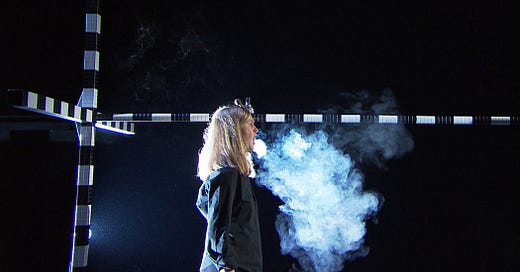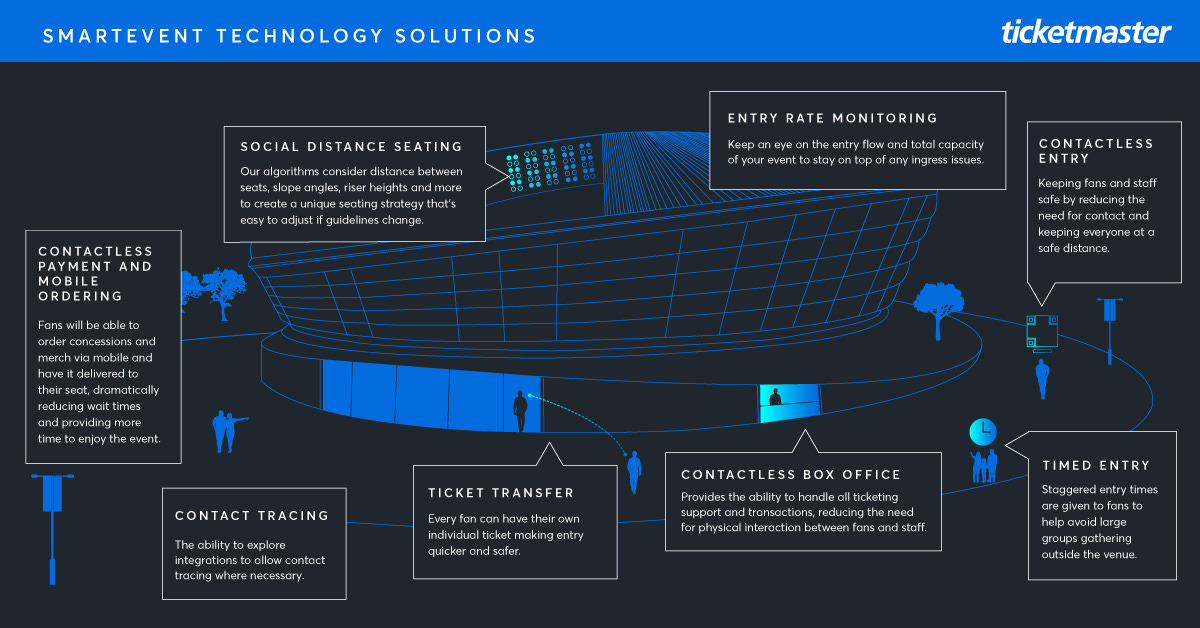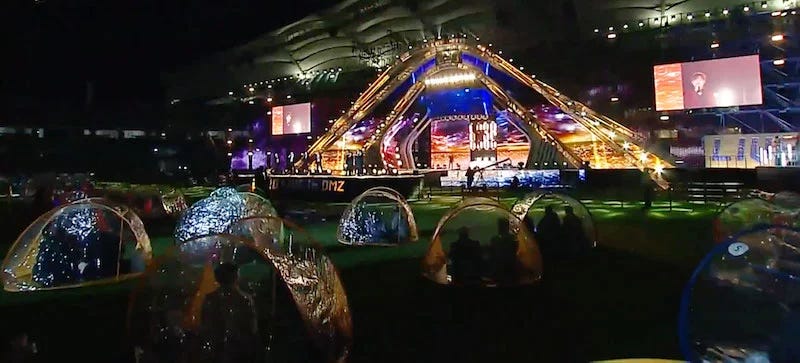If you’re looking for MUSIC x CORONA, you’ve found it. It’s now called MUSIC x. In short, it’s a free forward-looking bundle of news & insight about the global music business. Twice a week.
It started back in March when in the Netherlands 102 of 130 choir singers of the Amsterdam Mixed Choir fell ill to Covid-19. Then came the rehearsal of the Skagit Valley Chorale in Washington State, USA. There, 52 of 60 singers contracted Covid-19. Research by the CDC then advanced the notion that group singing events are highly transmissable events. Then, in September, the Rivertroupe Gospel Choir in Spain held a rehearsal where they upheld social distancing, tested temperatures and washed hands, but again reported that 30 of 41 singers then tested positive for Covid-19.
This seems to point directly to a danger of singing in groups, but what does the science say?
First, SARS-CoV-2 spreads through droplets and aerosols emitted while coughing and sneezing, but also when speaking and singing. Hence, the need for facemasks and social distancing measures.
Second, there are studies that have shown that singing, especially professional singing where diaphragmatic breathing is used instead of natural chest breathing, actually expels fewer droplets than speaking does.
Third, the spread of aerosols is different than that of droplets. The key difference is that they spread further and remain in the air for longer periods of time. While the scientific evidence for airborne spread of the virus is incomplete, there are strong pointers that it does. The best way to prevent this is air ventilation, avoiding air recirculation, and avoiding overcrowding. Going back to the choir examples above, we notice that they all took place in closed environments.
Where does this leave singers and choirs specifically? While the current spate of lockdowns - at least in Europe - prevents all cultural life from playing out, it seems that it’s not the singing that’s the problem. At least, not when it’s done with distancing and other hygiene measures in place. What would be required, however, is proper air ventilation. This might not be available in all rehearsal spaces, but seems to be the key to bringing all those wonderful voices out again.
If you’re new to MUSIC x CORONA and would like emails like this one in your inbox twice a week, sign up for free:
Last week, I wrote about the Project RESTART-19 results, which also stressed the importance of good air ventilation. In light of that I’d like to highlight the following:
Ticketmaster has come out with SmartEvent, ‘a suite of technology tools that helps fans return to live events.’
Social distance seating tool: uses custom algorithms to determine and configure seating arrangements based on venue size, logistics, distance, etc.
Timed entry tool: provides fans specific entry times
A bunch of contactless stuff connected to the Ticketmaster app, including payments, ordering, scanning tickets, etc.
Secure ticket transfer: a tool to help with contact tracing if needed
A UK booking agent has created a set of guidelines for DJs playing shows. Especially the ‘whilst at the show’ part is relevant across the board and globally.
Quick
Ticketing platform Seated has revealed data from the virtual shows they’ve sold tickets to:
50% of ticket sales happen in the 48 hours before the event vs 13% the day of announcement
Independent venues and promotors are great co-promotors for live events, adding around 30% ticket sales on top
People prefer the big screen to their phone (less than 15% watch shows on their phone)
Shain Shapiro wrote an excellent article in Forbes on the pressures heaped on our ecosystem and how we can alleviate them. I’m tempted to quote at length:
The pandemic has highlighted that music remains an integral part of society, but it seems to have further disassociated the end product - the finished song - from the process of how the song got there in the first place. And right now, in the eye of the pandemic, it is the time to fix this. We can do that through the creation of a Music Development Bank … [this] could provide micro and SME financing for music rights and ecosystem development in markets that lack it. It could provide social impact investment in music and cultural infrastructure, requiring those who access finance to commit to sustainable development, invest in local talent and commit to copyright transparency. Such a bank could prioritise climate negative investing - which could spawn better venues, better festival sites and better cultural infrastructure, especially in developing music markets. It could incorporate music into 20, 30 or 40 year investment plans - suitable for pension funds and sovereign wealth funds - because of the low-risk, consistent yield that music has proven to deliver year in, year out, prior to the pandemic. And music isn’t going away - we need to ensure investment reaches the source of creation. Now is the time to do so.
With quarantines coming back into play this video series on how artists use technology to connect themselves to the world is extremely topical: The Disappearance of Music
The Australian collecting society ARPA announced payouts from digital services grew by 27% YoY, but there were big drops for commercial TV (20%), commercial radio (57%), and concerts (24%)
IQ Mag has a helpful overview of all the Covid-19 tests that are being developed that could help speed up a return to live
MUSIC x CORONA is composed by Bas Grasmayer and Maarten Walraven.
❤️ patreon - musicxtechxfuture.com - musicxgreen.com - linkedin Bas - linkedin Maarten
😷 Music's crucial role in the 2020 US elections - despite the pandemic
Video games, virtual concerts and campaigning, music venues repurposed for polling, and the nightlife shutdown as a campaign topic.
Today is Election Day in the United States. Music, due to its cultural power, has always had a role to play in politics and elections. This year, even with a pandemic, is no different.
What follows is an overview of music’s role in the 2020 elections, with topics such as:
The nightlife shutdown as a campaign topic
Covid-19 themed campaign ads with artists
Getting out the vote through livestreams
Music paving the way for in-game campaigning
Venues being utilized as polling stations
Punk and the extremes of the left/right-wing divide
With challenges, such as not being able to perform on the campaign trail, come creative solutions such as the Team Joe Sings campaign which saw artist like Kesha, Anthony Hamilton, and Los Lobos, record performances of one or two songs and put them on their YouTubes.
If you’re new here & would like emails like these in your inbox twice a week, sign up for free:
Campaign ads, the case of The Blind Pig
This year, we’ve seen something we’ve never seen in a US presidential election before: a campaign ad about the music industry. Music is always a contentious issue during presidential campaigns. This year is no different with an ongoing - albeit onesided - tug of war between the Trump campaign and Creedence Clearwater Revival frontman John Fogerty about the use of music. One of many. But to use the current plight of the live music industry to hammer home a campaign message in an ad elevates music to a new status: from emotional trigger to policy statement.
How did it begin?
The Biden/Harris campaign opted to tackle the lack of decisive action from the Trump administration in handling the Covid-19 pandemic with an ad focusing on a live music venue: The Blind Pig in Ann Arbor, Michigan. The story is sadly typical with shutdowns forcing the venue to close indefinitely. The owner of The Blind Pig laments the lack of government support.
The problem
The problem is twofold. On the one hand, the venue owner, after the ad aired, was harassed and doxxed. This forced the Biden/Harris campaign to pull the ad from YouTube. This is the type of response that is sadly typical of the current political landscape in the US.
The other side of the coin is that of all the independent venues that are struggling in the US right now, the Biden/Harris campaign picked one run by an angel investor. In other words, a man rich enough to not be severely affected by the closure of one of his businesses. Now, there’s nothing wrong with all that, but it made him an easy target for all the vitriol that was pushed his way. Something that could have easily been prevented by picking another venue in the same situation but just with another ownership structure.
The side story
The ad gained notoriety at first because it was the first time the Beastie Boys licensed their music for a political campaign. The makers’ use of Sabotage is, in my opinion, excellent in setting the tone for the video.
Trump’s failed Covid-19 public service announcement campaign
The Department of Health and Human Services prepared a $265 million ad campaign about the government’s coronavirus response prior to election day. The campaign vetted hundreds of celebrities, among which many rappers and other musicians, and approached a lot of them. Tenacious D’s Jack Black was considered “a classic Hollywood Liberal”, according to recently released documents. Lil Wayne and JAY-Z’s entries state “maybe; follow-up” besides noting their previous support for Barack Obama.
It may not have been clear to some of the approached people that the PSAs were seemingly being produced to drum up support for Trump. Other musicians vetted, according to the spreadsheet document (direct link to PDF) were Adam Levine, Lady Gaga, Travis Scott, Britney Spears, and Eminem. The latter just endorsed Biden and let the campaign use his hit Lose Yourself for a campaign ad.
Getting out the vote
Music also permeates another side of the election cycle, one that is louder this year than at any time before: the get-out-the-vote call. In her now famous virtual concert, Billie Eilish’s last words were: “Vote, for God’s sake.” Prior to the concert, Eilish’s pre-show featured Lizzo, Alicia Keys, Jameela Jamil, and Steve Carell who encouraged viewers, who were also supplied with informative resources about the elections, to vote. Taylor Swift uses Instagram. Universal, Warner, and Sony all have their own get-out-the-vote programmes. Audiomack and LA-based TheBasement hosted a livestream on Twitch which intertwined music with content aimed to educate young, first-time voters.
But there’s more to this then just answering the call of your favourite artist to go and vote. In the form of #iVoted, people can gain access to livestreamed shows RSVP-ing innovatively:
“w/ a selfie at home and their mail-in ballot. Or with a photo from outside of their polling place for in-person voting.
Artists involved were selected by the #iVoted organisation together with Chartmetric to target regionally popular artists in swing states. This way, you get a reward for acting on your right to vote. Hopefully, many music fans will (have) see(n) this as a little push to get them into that voting booth.
Music paved the way for… In-game political campaigning
More than a year before the World Health Organisation declared the Covid-19 outbreak to be a pandemic, Fortnite saw its first in-game music concert when Marshmello performed in its Pleasure Park. What could be said to be one of 2020’s most important moments for music was another Fortnite performance, this time by Travis Scott.
The Biden campaign worked with Fortnite to create a special map where players can complete six challenges ranging from rolling out broadband internet, to making a factory environmentally-friendly, to expanding a historically black college.
It’s not the first in-game campaigning done by Biden and Harris. Previously they launched a set of yard signs for Animal Crossing followed by a virtual field office with poll booths, ice cream, and opportunities to take virtual selfies with Biden.
Whether the strategy pays off remains to be seen, although young voters are voting in record numbers. Whether you’re an artist or a politician, it makes sense to go where Gen Z hangs out. In 2020, and 2019 too for that matter, that’s in video games, not malls.
Music paved the way for… Repurposing venues as polling stations
One of the unfortunate consequences of this year is that music venues have seen themselves repurposed as restaurants, bike parking, and hospitals. For the elections, some venues are now functioning as polling stations.
Back in September, Live Nation announced it was exploring the feasibility of venue conversion to polling sites for over 100 venues across the US in partnership with Civic Alliance and More Than a Vote.
“With space available, and venue executives, staff, security personnel, cleaning companies and other vendors already having spent months devising protocols to reopen facilities as safely as possible, these buildings are ideal locations for electoral functions,” said Brad Mayne, president and CEO of the International Association of Venue Managers.
How punk defines the extremes of the left-right divide
Flashback to a few decades ago:
Neo-nazis listen to punk music, they’re skinheads and they’re racists.
Anarchists listen to punk music, they’re skinheads and they’re violent.
This was the fight within the punk scene from the 1980s. And, in a way, it still defines the extremes on this spectrum of left-wing to right-wing politics. There are two radically different ideologies who both define themselves against their uncompromising dogmas and who love to fight each other, not in the moshpit but preferably in the streets and with an audience.
In the run up to this election, the band Trapt kicked up a fuss when their recent concert in Dallas was cancelled. They blamed so-called ‘social justice warriors’ and there are, of course, much stronger terms at play too. Some of them were heard in Charlottesville a couple of years ago, a place where neo-nazis and anti-fascists clashed. In both instances media were used to blow up the stories and bring it to wider attention. In both instances the messages behind the original protest are lost in the quagmire of violence.
Interestingly, both of these factions don’t like ‘the media’ anymore. On the right, they don’t trust anyone after four years of ‘fake news’ messages from the president. On the left, they don’t trust the police to not use any images from the media to arrest people. With such a breakdown of trust, where does this leave the centre?
As the results of the election will be held up by the counting of mail-in-votes, different procedures in various states, and various other potential bottlenecks there will be much to challenge by both parties and their bases. For the extremists on both sides, let’s hope they listen to Jello Biafra, formerly of the Dead Kennedys:
“More than ever, we have to keep our heads right now. And I am all about freedom of speech, but I think protesting these people non-violently is the way to go, because it lets the targets of the fascist speakers know they’re not alone and lets the fascists who show up know that there’s an awful lot of people who are not down with them, and a chorus of raised middle fingers is better than showing up with some kind of a weapon. Escalating the violence is not the way to go.”
—
One really wonders what this year would have looked like without the pandemic and what the elections would have looked like. There’s a fascinating piece by Zach Schonfeld on Pitchfork about 2020’s alternate timeline that you should read.
To all our readers in the US, we probably don’t have to tell you, but if you haven’t done so yet: please vote.
And take care.
Bas & Maarten
A very special thank you to your support to these MUSIC x members on Patreon:
Bo Plantinga, Casper Schadt, Maarten Walraven, and Pete Cohen!
It’s early days and I’m excited to have your support right at the start of this journey.
MUSIC x CORONA is composed by Bas Grasmayer and Maarten Walraven.
❤️ patreon - musicxtechxfuture.com - musicxgreen.com - linkedin Bas - linkedin Maarten
😷 Putting major concerts back on with the backing of science
A mathematical model that shows which measures should be implemented at major events to minimize the risk of infection with Covid-19
Back in August scientists from the Medical University Halle in Germany held an experiment in the Arena Leipzig to model how Covid-19 would spread in various situations at a major event - a concert. The experiment ran under the name: Project RESTART-19. Today, the results have been made public, but haven’t been peer-reviewed yet.
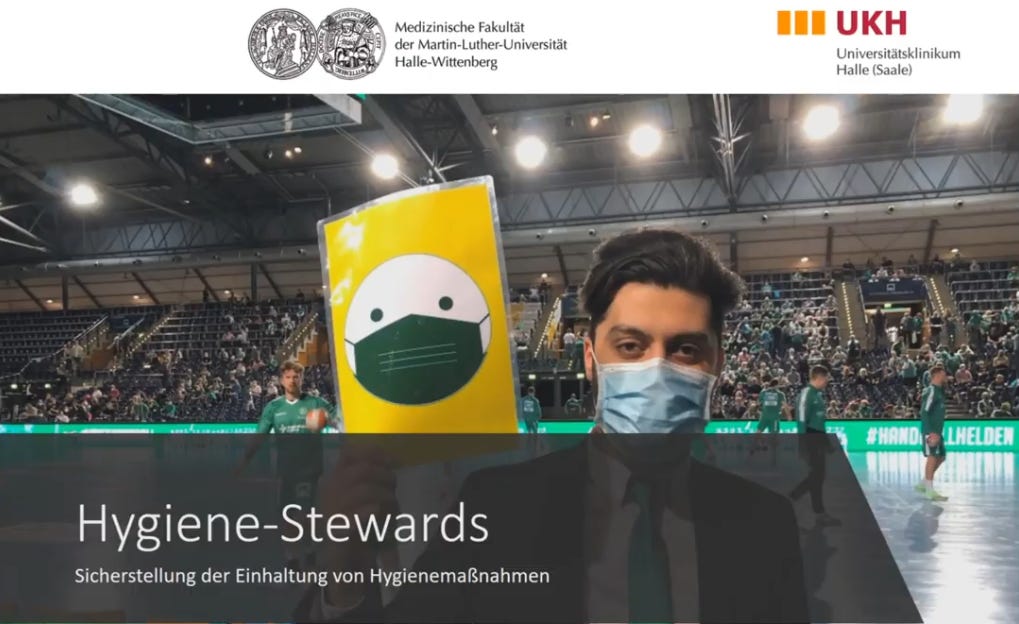
The background
The pandemic has brought with it many unknowns. The scientists involved asked ‘what can we do?’ And what they can do is to provide a scientific basis for event organisers and politicians and to provide recommendations based on their findings. They do this because they want people to be able to make decisions based on facts and with transparency: do what you know, not what you believe. Knowledge of the risks allows people to adapt and focus on the opportunities.
The experiment
The researchers focused on three scenarios:
pre-pandemic full concert with 8000 attendees in the arena;
various measures in place such as 50% attendees, seating in quadrants (chess-board seating);
more measures in place with people only allowed to sit in pairs and observing a 1.5m distance (5ft).
All attendees wore a contact tracer that clocked 3 different types of contact: 1) 3 seconds; 2) 5mins; 3) 15mins.
The results show that the seating plan heavily impacts the number of contact moments, especially those that have a longer duration. What’s more, in scenario 3 the only person that attendees had a 15min contact with was the one they were sitting next to. Outside of the seating, contact moments - obviously - increased during entrance, intermission, and while leaving the arena.
Besides the movement of people and subsequent contact moments, the researchers also focused on the spread of aerosols. The importance of good systems to bring fresh air into the arena cannot be overstated. Using computer modelling the researchers have shown how with a good air purification system the risk of the spread can be reduced by sucking the aerosols up towards the ceiling and out of the arena. However, with a poor ventilation system the risk of contact with aerosols from infectious persons grew to a third of the audience. The researchers assumed 24 infected persons with the 4000 capacity scenario 2.
After the concert, the attendees were given a questionnaire and most were fine with wearing a mask with only 12% expressing displeasure. This followed the next statistic where 70% of attendees said they would wear a mask.
When looking at the risk impact of a large scale event on the wider society the researchers used an incidence rate of 10, 50, and 100 per 100,000. In all cases the impact of wearing a mask was strong, although much bigger in situations with poor ventilation and in the higher incidence rate situations. At the lowest incidence rate, with good ventilation and with mask-wearing the wider implication of scenario 1 and 2 appear negligible in society at large.
Recommendations
No full capacity concerts as any hygiene concept has to reduce the number of attendees.
No standing concerts, only seated concerts as this provides fixed distance and contacts.
More entry points and staggered entry to reduce contact moments.
Mask-wearing should be mandatory in all public places. Potentially allow people to remove masks when seated, especially in scenario 3.
Only allow people to consume drinks (and food) while seated.
Adequate ventilation systems are needed. First, a standard must be provided to all venues and promoters. Second, there must be an investment programme from government bodies to help implement appropriate ventilation systems.
With an incidence rate lower than 50 per 100,000 per week, the researchers recommend scenario 2, allowing 250 people to enter per entry point per hour.
With an incidence rate higher than 50 per 100,000 per week, the researchers recommend scenario 3, allowing 250 people per entry point only.
Final point, enlist the help of hygiene stewards to help people understand what they need to do when.
What’s next?
Now we have a scientific basis to organise concerts, the next step is to bring governments on board to support these findings. Similarly, we’ll need to develop concepts that will work within the suggested scenarios. We’ll need to get creative, because so far, all evidence has pointed to events running at 50% capacity or less to not be financially viable for anyone involved. It would also be great if we can take this research and apply it to smaller scale events. Hygiene concepts can be set up, air ventilation prioritised, and mask-wearing can be made mandatory.
New to MUSIC x CORONA? Get updates like these in your inbox, for free, twice a week.
Quick
Switzerland is putting in place new restrictions that mean nightclubs are closed.
With lockdowns come the aid packages: Northern Ireland announces a GBP13m fund for the arts and heritage.
The Union of Musicians has launched a ‘Justice at Spotify’ campaign. They ask for higher streaming payouts, but Spotify doesn’t pay artists directly, it pays the labels. More interestingly, they urge Spotify to be ‘transparent with their finances, their platform, and their relationships with artists.’ And ‘to give due credit to all engineers, musicians and laborers on all recordings.’ That, we can all get behind.
A critique of the critique of plague raves in the First Floor newsletter.
A couple of weeks ago I wrote about insurance policies for artists on tour. Over on The Music Network we can read how ‘insurers do cover terrorist attacks for festivals … [while] cover for communicable diseases is different story.’
Nico Muhly will premiere Throughline with the San Francisco Symphony online and on TV on 14 November. I feel this could become a defining piece of music for the pandemic. Nico wrote it especially for this moment and the recording also captures what we’re going through with artists performing their piece in various places across the globe. Finally, Nico doesn’t conduct per se, but layers the various recordings. In his own words: “what I’m doing is a very stylized form of traffic control.”
To prove again that the decrease in streaming for recorded music at the start of the pandemic was a blip, Sony has had its biggest quarter ever for recorded music.
But it’s not all good on the recorded music side, as CISAC reports that while they saw growth coming from the global collecting societies in 2019, they expect a drop of 35% in 2020. Moreover, they feel this impact will be felt all through to 2022. CMU has an excellent breakdown of the numbers.
Music Ally has just released a report showing that just in the Dutch dance scene cancelled events account for a loss of €50m in performing rights fees for songwriters.
Marc Geiger, cofounder of Lollapalooza, set up SaveLive. An investment fund that aims to buy 51% of equity in as many American venues as possible to help keep them alive and open post-pandemic. It sounds like a finance play, buying a distressed asset on the cheap. But Geiger and his backers claim it’s not. Only time will tell…
Let’s end on a happier note: Amsterdam Dance Event’s virtual edition was a big success reaching millions and getting great feedback. Another strong sign that virtual events can remain in practice when physical live events are back.
Music
I’ve been enjoying Sam Amidon’s new record a lot. It’s his sixth album, but the first to be self-titled. For me, this shows how he’s grown into his own with this album. It’s still quintessentially Sam Amidon with the folky songs, the banjo, etc. But the production is much more airy providing more space for him and the song.
Next week: special US election edition
Keep your eyes peeled for a special edition next Tuesday, as we’ll look at this newsletter’s topic in the context of the US elections. It will also be the first time Bas and I actually co-write a newsletter edition - we normally just take turns.
Since it will be a bit more work editorially, Bas will be able to give people on the MUSIC x Patreon a preview ahead of time.
MUSIC x CORONA is composed by Bas Grasmayer and Maarten Walraven.
❤️ patreon - musicxtechxfuture.com - musicxgreen.com - linkedin Bas - linkedin Maarten
😷 Music's long winter starts now
Renewed lockdowns accelerate music's troubles. Here's some things you can do.
We are heading into music’s longest winter. There was always a sense that we’d see a second wave with people spending more time inside, together, after the summer. That second wave is here now, with the EU’s infection rates finally surpassing those of the US:

This means renewed lockdowns, “lockdown lites”, and prolonged measures. The headlines for the music industry read as you would expect:
I imagine that without more support, we’ll see lots of people throw in the towel over the next few months. Whether that’s clubs and festivals that go out of business, people who work in such places who decide to start a new career elsewhere, and people who in other ways depend on live music, like artists, agents, etc. By the time warm weather comes back around to the northern hemisphere, and with it lower infection rates and a chance for outdoor events, people who will have been part of this industry for years will have left it.
Some things you can do:
Find out what music & cultural organisations are lobbying for government support locally and see what you can do to amplify them.
Donate to support funds if you can - most countries have at least one. Google it.
If you’re a music company or startup and you have job openings: share them far & wide, instead of privately. This is not only important for the sake of inclusion, but it will also give people in music a way to stay in music.
If you’re a company: think about how you open roles. Are there ways to make roles more compatible for people making a career switch inside music?
Participate in long-term thinking. We won’t “return to normal”. The world will be a different place post-pandemic - especially the world of music. Balance helping others keep their heads above water (or your own) with imagining where the world might be 5-10 years from now. What trends do you see? What might they impact? Plan for that.
And don’t forget your mental health.
If you’re new to MUSIC x CORONA: we send emails like this one out twice a week. It’s free.
Quick
Billie Eilish livestream charged $30 for tickets, which didn’t prove to be too much. The show had stunning visuals (online music is a visual culture) and fans on screens throughout the show.

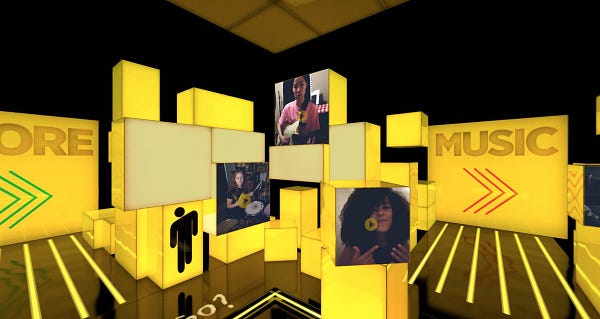
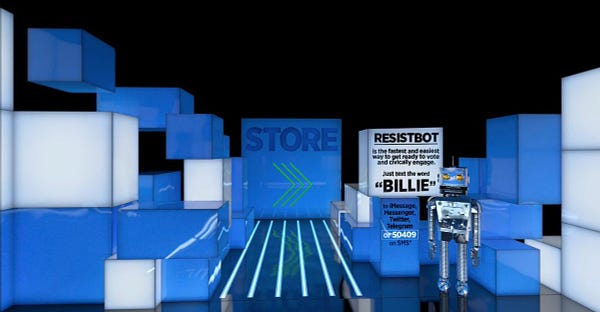
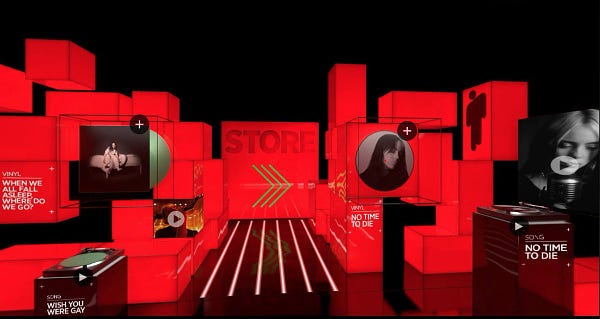
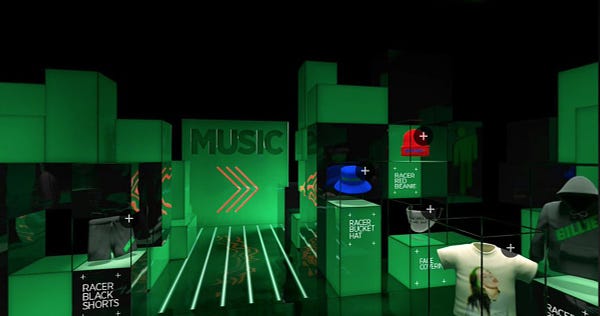
Is the time ripe for adaptive music? Composer Ellen Reid created a location-specific music work that you install on your phone and then interactively listen to as you walk through New York’s Central Park. It’s called Soundwalk. I’m a big fan of projects like these, since they push beyond the traditional constraints of recording music. Back in 2011, a duo named Bluebrain also made an interactive composition specifically for Central Park. Perhaps now with social distancing and people wanting to get out of the house more, the time is ripe for more mainstream adoption of these concepts.
Gorillaz and Beck are the latest headliners to cross over into video games, as they appeared on Animal Talking - a talk show inside Animal Crossing - to perform their new song.
The US National Independent Venue Association (NIVA) raised $1.8 million through its 3-day #SOSFest, which saw major artists streaming from 25 indie venues across the US.
Henry Prince and Jeremie Joubert wrote a detailed guide to monetising livestreams. Goes into everything from ads to tipping, paywalls to subscriptions, merch to connecting it all to your presences elsewhere.
The pandemic has functioned as an accelerator for certain trends. I assume the increasing number of people building complex things in low-code to no-code environments has been accelerated too. One of such environments is Roblox. 80% of US kids between 9-12 have played Roblox. Under 13s spend more time on Roblox than YouTube, Netflix and Facebook combined. And that's PRE-pandmic.
Music Tectonics just did a podcast with Roblox’ global head of music John Vlassopulos. They have big plans for music in 2021.
Patreon
You can support all we do for $6 a month. I send all supporters a personal thank you, you get access to backstage polls about the direction of these projects, and you’ll get a monthly shout-out in the newsletter. There are 2 more tiers with extra perks, as well as a $2.50 option to just buy me the cup of coffee I drink while composing these newsletters.
My goal is to turn this into my main source of income, so I can work on the various MUSIC x projects full-time and generate more insight into what’s next for music.
Next week: special US election edition
Keep your eyes peeled for a special edition next Tuesday, as we’ll look at this newsletter’s topic in the context of the US elections. It will also be the first time Maarten and I actually co-write a newsletter edition - we normally just take turns.
Since it will be a bit more work editorially, I’ll be able to give people on the MUSIC x Patreon a preview ahead of time.
Music
Nostalgia is one of the key drivers in music trends currently. I’ve always referred to drum & bass music as my ‘home genre’. I’ve been listening to it a lot more recently from a Spotify playlist I started building ten years ago, which has amassed more followers than my TikTok account, but way less than this newsletter.
MUSIC x CORONA is composed by Bas Grasmayer and Maarten Walraven.
❤️ patreon - musicxtechxfuture.com - musicxgreen.com - linkedin Bas - linkedin Maarten
Loading more posts…




